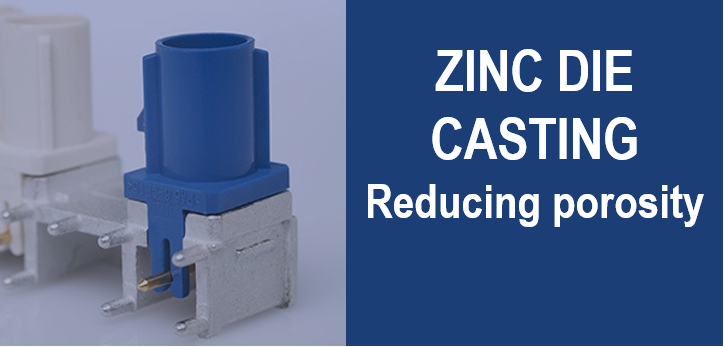As winner of numerous international awards, Bruschi Spa is known for its innovative approach in design and technology. We are glad to share our insights and experiences with the industry members.
Reducing porosity in high pressure zinc die casting
In this blog post, we'll dive into the most common defects that can appear in high pressure zinc die casting and a possible way to avoid them: gas porosity, shrinkage porosity and leaks.

High pressure zinc die casting is the process of forcing molten zinc based alloy under high pressure into a mould cavity. This delicate process can be influenced by a series of factors like the mould geometry, the composition of the alloy and the injection process that forces the molten metal into the mould. The most common defects that can appear on a diecast are:
Porosity: influences the quality of final product in terms of tightness and strength. The most common porosity types are gas porosity, shrinkage porosity and leaks.
Gas porosity: air trapped in the casting caused by poor shot end control, poor venting and overflow function, or bad design.
Shrinkage porosity: internal cracks in the casting mainly due to different wall thickness of the casting. The metal reduces its volume during solidification and it is impossible to feed shrinkage with more metal before solidification. Shrinkage porosity in a specific zone can also be caused by hot spots.
Leaks: in high pressure zinc die casting leaks can be caused by different elements in various phases of the process, such as die surface and structure, poor thermal control, hot & cold spots, and difficult casting geometry.
To avoid gas inclusions, porosity and cold laps and in order to provide optimal filling features and short cycle times, die casters need to be able to foresee casting conditions and processes.
Die casting simulation tools are a powerful way to picture mould filling, solidification and cooling phases, and to be able to predict internal defects such as shrinkage porosity and their locations.
The simulation can be used both for solving problems in existing castings or for developing new projects avoiding the trial costs.
The use of a casting process simulation software can help in defining the best parameters, with no need of costly casting trials and tooling modifications, before the actual production. Analysis of the simulated charts can help optimizing the mould set-up and guarantee high finishing quality of the product, mould durability, and less scrap. In terms of economic benefits, using such technology can lead to reduced production costs and customer rejections.
Simulation programs can offer animated visualization of mould filling, casting solidification and cooling.
Mould filling simulation foresees filling time, mould erosion, incomplete filling, and blisters. Casting solidification simulation shows different temperatures, gradients and cooling rates inside the casting, which influence shrinkage porosity location. Cooling simulation can be useful for predicting mechanical properties, residual stresses, and distortion.
A simultaneous study of mould filling, solidification, and cooling is now becoming a required process for high pressure die casting as it provides a better insight than actual trials, since it is possible to look through the mould, although virtually.
Simulation can be applied to existing castings to solve problems and avoid internal defects. The exact method used in production is modeled on computer where the actual and simulated location of defects are compared and calibrated. It is not rare during simulation to see defects that have not been inspected in practice yet and eliminate them.
For both existing castings and those under development, the design simulation can avoid shop-floor trials. Design includes casting orientation, mould layout, runners and gates, and it can be simulated to look for possible defects and correct the layout until the desired quality is achieved.
A minor improvement in existing or under development castings which are meant to be produced on a large scale, can lead to significant costs reduction thanks to major improvements in material and energy consumption, labor resources, and scraps reduction.
If you are using simulations to design or improve your die casting moulds and processes please share your experience by filling in the Contact Us form below.
To get updates on trends and innovations in the Zinc Die Casting industry, you are welcome to subscribe to our blog.

